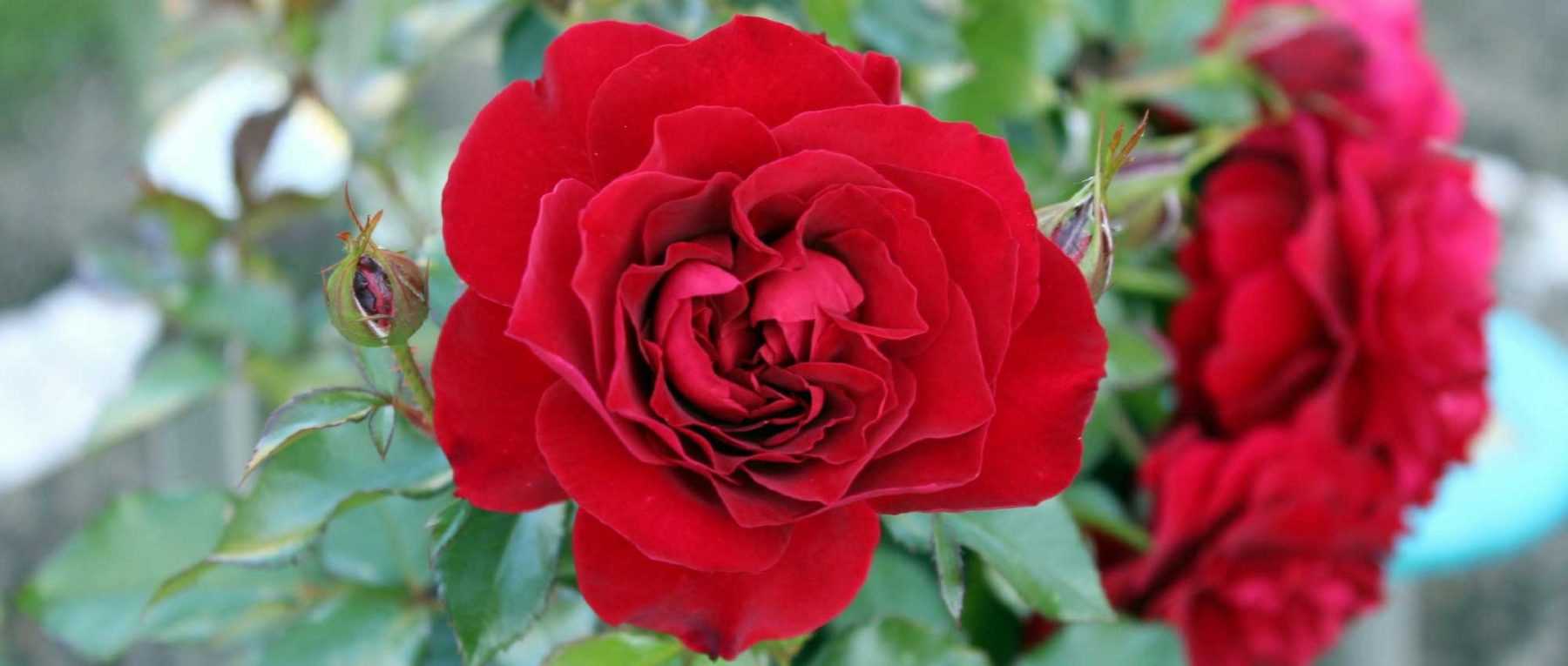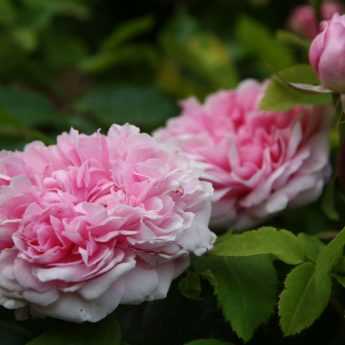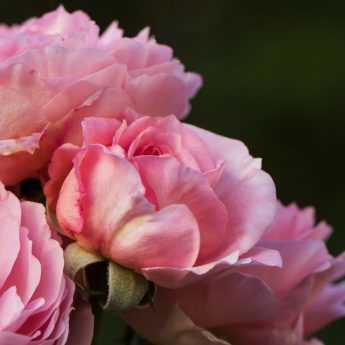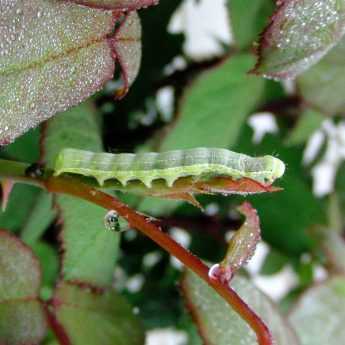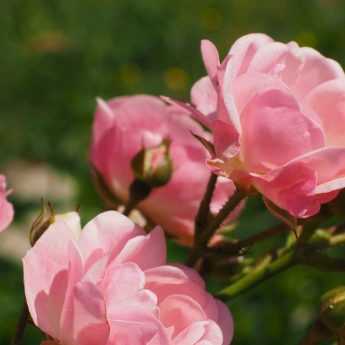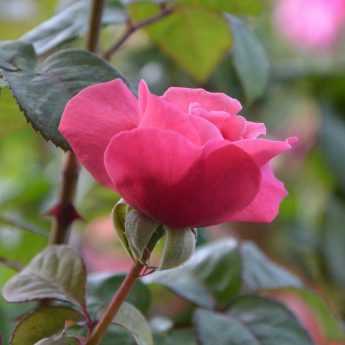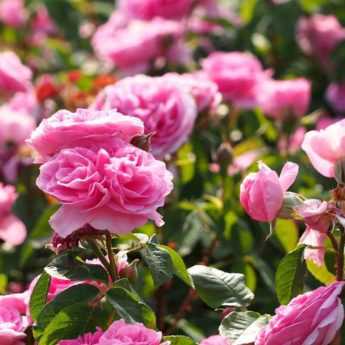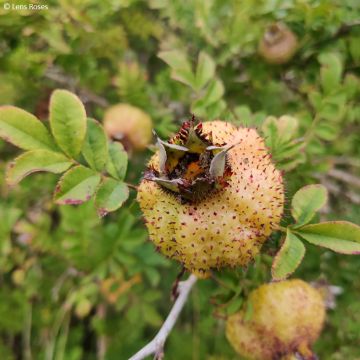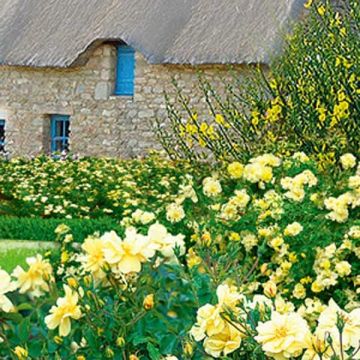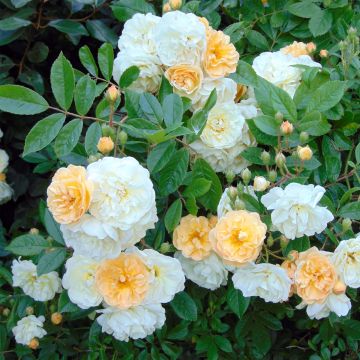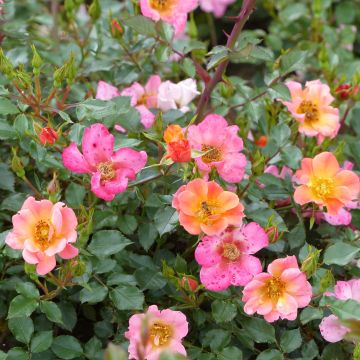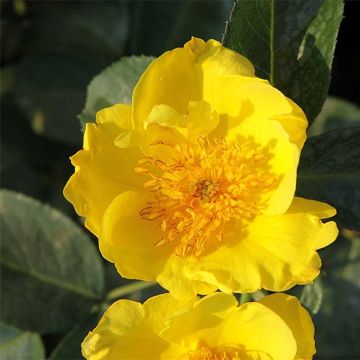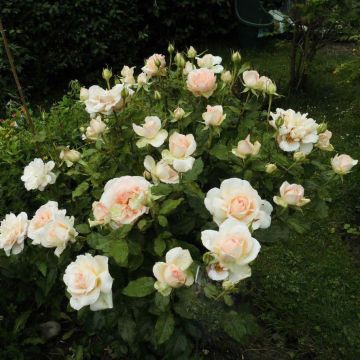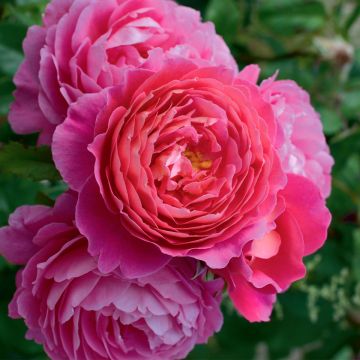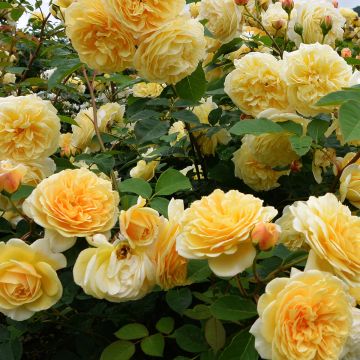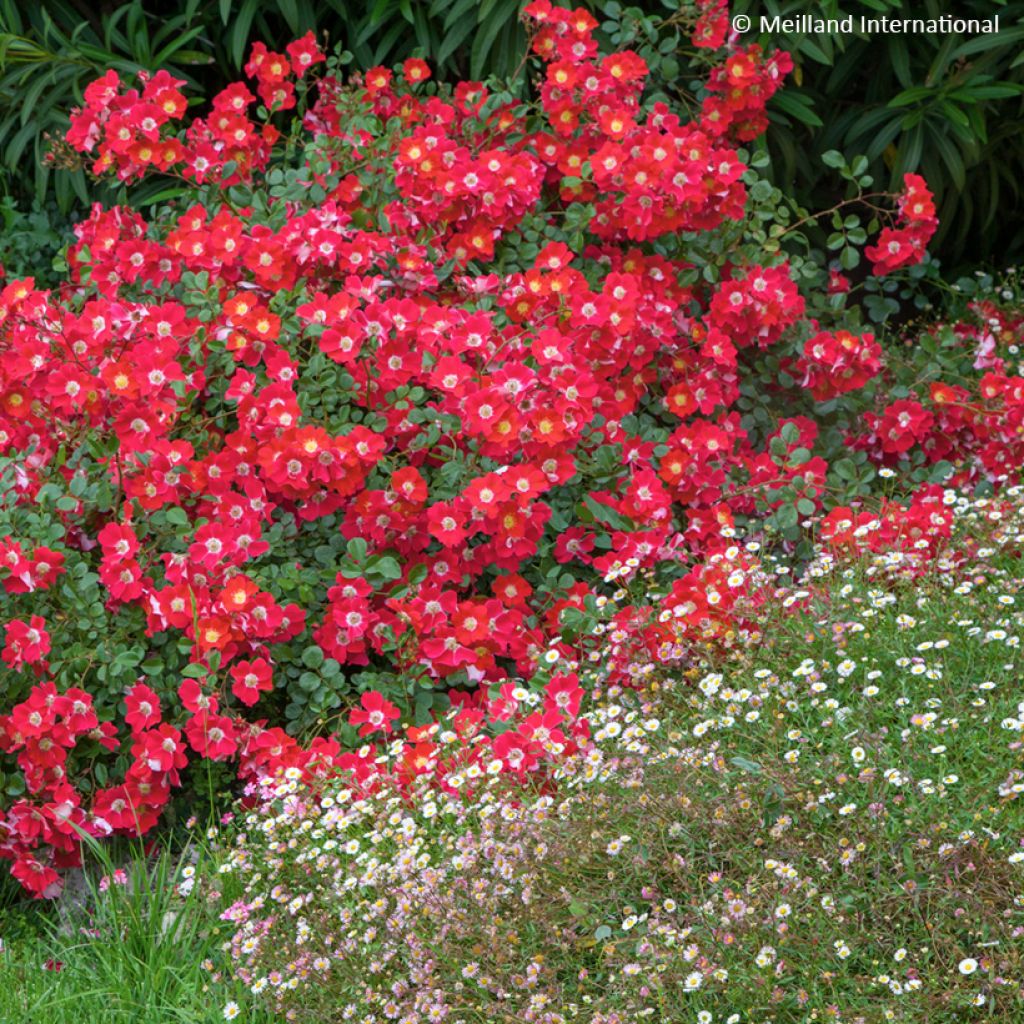

Rosa Candia Meillandecor - Groundcover Rose
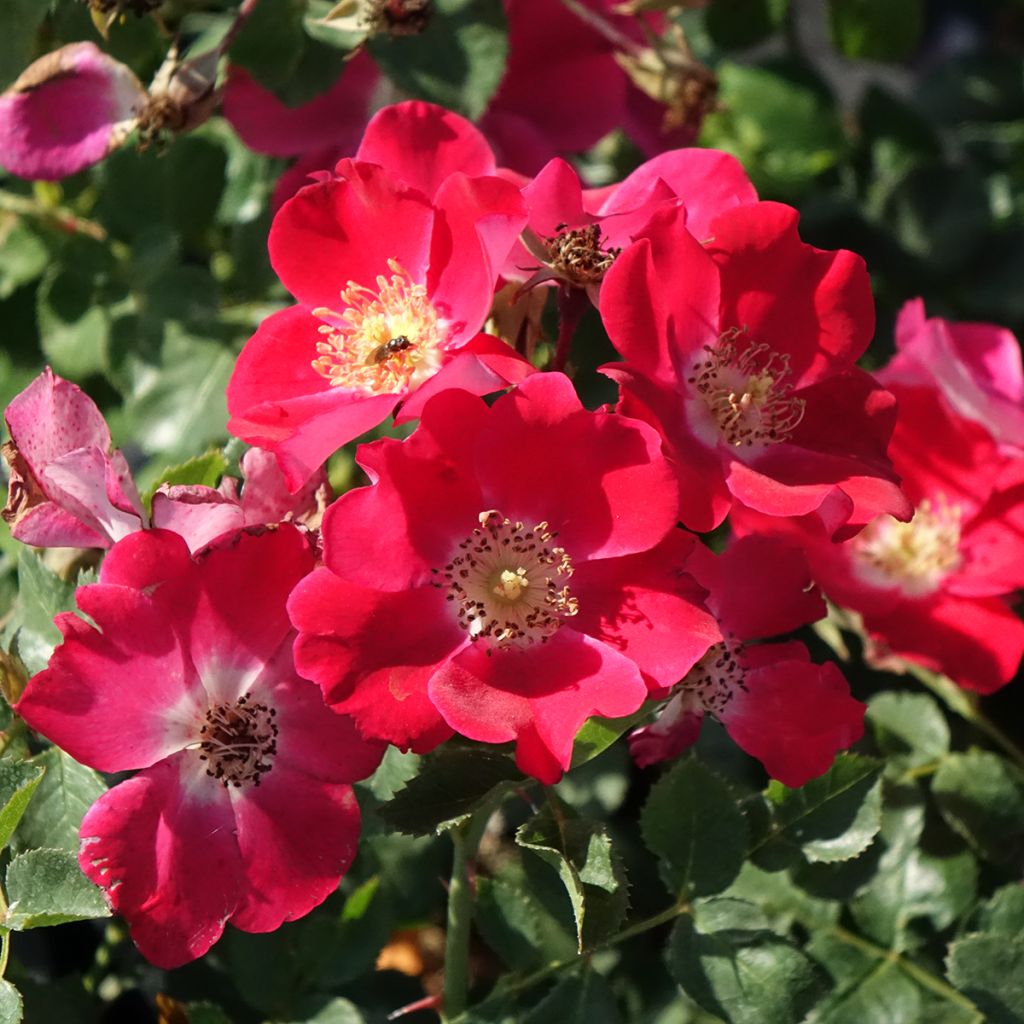

Rosa Candia Meillandecor - Groundcover Rose
Rosa Candia Meillandecor - Groundcover Rose
Rosa 'Meiboulka' CANDIA MEILLANDECOR®
Thank you to the team (for order preparation and shipping), the replacement rose bush received under warranty seems healthy (much better condition than the first one received). Planted in the ground, along the edge of the path, I'm now patiently waiting for it to take root...(or not?).
Thierry, 17/07/2025
Home or relay delivery (depending on size and destination)
Schedule delivery date,
and select date in basket
This plant carries a 24 months recovery warranty
More information
We guarantee the quality of our plants for a full growing cycle, and will replace at our expense any plant that fails to recover under normal climatic and planting conditions.


Would this plant suit my garden?
Set up your Plantfit profile →
Description
The Candia Meillandecor® bush rose is an exceptional ground cover variety, awarded the Gold Medal in Madrid, the Silver Medal in Geneva, the title of Grande Rose du Siècle in Lyon, and the prestigious German A.D.R. label. Selected for its abundant flowering, vigour, and remarkable resistance to diseases, this rose is a perfect ally for structuring flower beds, bordering a pathway, or stabilising a slope. Its spreading, bushy habit and generous width of 80 to 100 cm, along with its rapid growth, enable it to quickly cover large areas and form a dense carpet of vibrant flowers. Its single, bright red flowers illuminate the glossy dark green foliage from late spring until the first frosts. In autumn, it extends its decorative appeal with an abundant production of small orange fruits, prized for their winter interest. An exceptional rose, as elegant as it is adaptable to challenging conditions.
Belonging to the Rosaceae family, the Candia Meillandecor® Rose, also known as the Candia Meidiland Rose, is a modern hybrid variety developed to offer prolonged flowering and effective ground cover. It forms a broad, dense bush reaching 60 to 80 cm in height and 80 to 100 cm in width, making it an ideal plant for landscaping requiring extensive, low-maintenance vegetation. Its flexible, ramified stems of rapid growth support inflorescences in clusters of several flowers, providing abundant waves of blooms throughout the season. The bright red single flowers with a golden centre and lighter reverse, are particularly attractive to pollinators and create a striking contrast to the glossy dark green foliage. The clearly visible golden stamens add a luminous touch to the flowering and enhance the natural, rustic charm of this rose. As autumn approaches, it produces a multitude of small orange hips which persist into winter, offering an additional ornamental value and a precious resource for local wildlife. Its deciduous, thick, and glossy foliage shows remarkable resistance to common rose diseases, including black spot and powdery mildew, without requiring any specific treatments.
The Candia Meillandecor® Rose adapts easily to various soil types as long as they are well-drained. It prefers a full sun exposure to maximise flowering but also tolerates light partial shade in warm climates. Mulching at the base will help retain moisture and encourage more abundant blooms. With its vibrant red hue, this rose blends harmoniously into colourful flowerbeds alongside white or pastel pink bush roses, offering a refined contrast. It also forms a beautiful display in borders or rockeries when paired with perennials with grey-green foliage such as lavenders, artemisias, or perovskias, which will highlight its brilliance. Planted in groups, it creates a dense, lasting floral carpet perfect for enhancing a slope or sloping terrain. This rose also pairs beautifully with low-growing bushes like Japanese spireas, potentillas, or creeping ceanothus, which offer complementary blooms throughout the seasons. In a naturalistic garden, it attracts pollinators and pairs harmoniously with melliferous plants like sages, yarrows, and blue-violet perennial geraniums.
Rosa Candia Meillandecor - Groundcover Rose in pictures
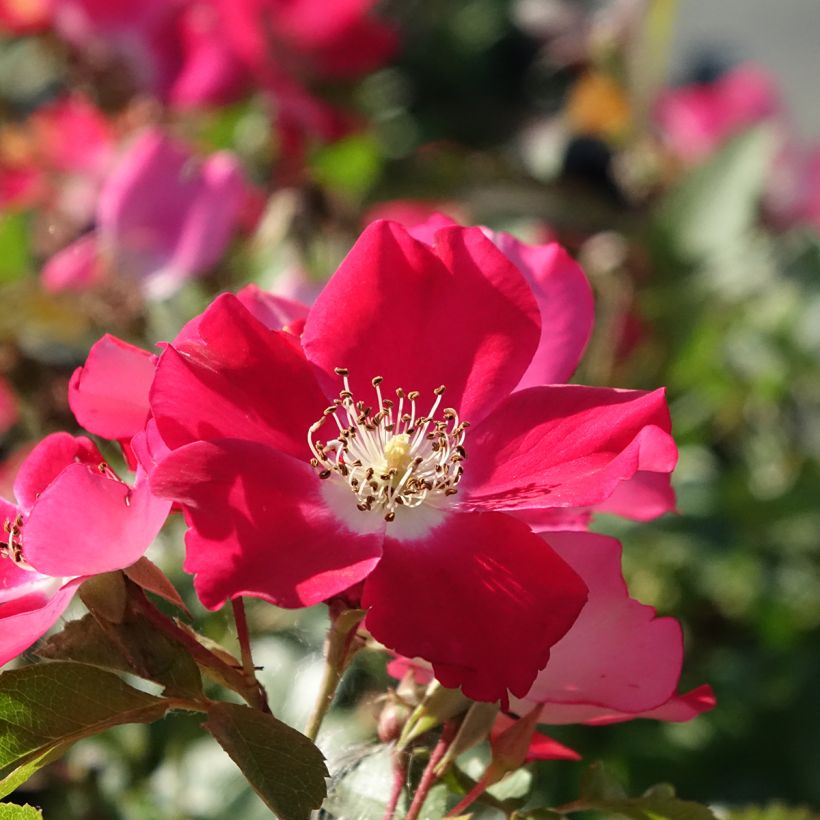

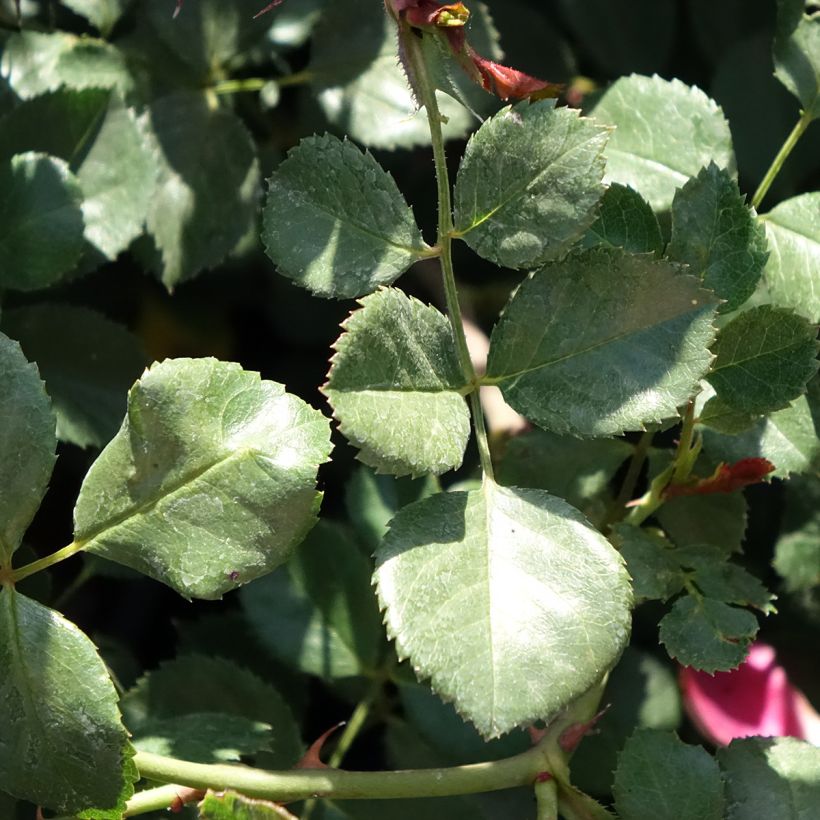

Plant habit
Flowering
Foliage
Botanical data
Rosa
'Meiboulka' CANDIA MEILLANDECOR®
Rosaceae
Rosa CANDIA MEILLANDECOR®, Rosa 'Meiboulka' CANDIA MEIDILAND
Cultivar or hybrid
Planting and care
Candia Meillandecor groundcover roses prefer a sunny position (at least 4 hours of sunlight per day) but sheltered from the scorching midday sun and strong winds. They thrive in loose, well-drained, humus-rich soil. They prefer slightly acidic soil but will adapt to any garden provided that the ground is well-prepared and sufficiently fertile. Work the soil to a depth of 25 cm, breaking it up well, and add a base amendment such as dried blood or dehydrated horn meal at the bottom of the planting hole. Place your plant, removed from its pot, covering the top of the root ball with 3 cm of soil, backfill, and water thoroughly to eliminate any air pockets. During dry weather, water regularly for a few weeks to encourage root establishment. Also, remember to feed your rose with a special rose fertiliser to stimulate flowering.
Roses often develop spots or look unsightly by late summer, but this does not affect their growth. These spots are not harmful to the plant—it's a natural phenomenon. Follow all our advice to address this issue and read our article: Help! My Roses Have Spots
Planting period
Intended location
Care
Planting & care advice
-
, onOrder confirmed
Reply from on Promesse de fleurs
Similar products
Haven't found what you were looking for?
Hardiness is the lowest winter temperature a plant can endure without suffering serious damage or even dying. However, hardiness is affected by location (a sheltered area, such as a patio), protection (winter cover) and soil type (hardiness is improved by well-drained soil).

Photo Sharing Terms & Conditions
In order to encourage gardeners to interact and share their experiences, Promesse de fleurs offers various media enabling content to be uploaded onto its Site - in particular via the ‘Photo sharing’ module.
The User agrees to refrain from:
- Posting any content that is illegal, prejudicial, insulting, racist, inciteful to hatred, revisionist, contrary to public decency, that infringes on privacy or on the privacy rights of third parties, in particular the publicity rights of persons and goods, intellectual property rights, or the right to privacy.
- Submitting content on behalf of a third party;
- Impersonate the identity of a third party and/or publish any personal information about a third party;
In general, the User undertakes to refrain from any unethical behaviour.
All Content (in particular text, comments, files, images, photos, videos, creative works, etc.), which may be subject to property or intellectual property rights, image or other private rights, shall remain the property of the User, subject to the limited rights granted by the terms of the licence granted by Promesse de fleurs as stated below. Users are at liberty to publish or not to publish such Content on the Site, notably via the ‘Photo Sharing’ facility, and accept that this Content shall be made public and freely accessible, notably on the Internet.
Users further acknowledge, undertake to have ,and guarantee that they hold all necessary rights and permissions to publish such material on the Site, in particular with regard to the legislation in force pertaining to any privacy, property, intellectual property, image, or contractual rights, or rights of any other nature. By publishing such Content on the Site, Users acknowledge accepting full liability as publishers of the Content within the meaning of the law, and grant Promesse de fleurs, free of charge, an inclusive, worldwide licence for the said Content for the entire duration of its publication, including all reproduction, representation, up/downloading, displaying, performing, transmission, and storage rights.
Users also grant permission for their name to be linked to the Content and accept that this link may not always be made available.
By engaging in posting material, Users consent to their Content becoming automatically accessible on the Internet, in particular on other sites and/or blogs and/or web pages of the Promesse de fleurs site, including in particular social pages and the Promesse de fleurs catalogue.
Users may secure the removal of entrusted content free of charge by issuing a simple request via our contact form.
The flowering period indicated on our website applies to countries and regions located in USDA zone 8 (France, the United Kingdom, Ireland, the Netherlands, etc.)
It will vary according to where you live:
- In zones 9 to 10 (Italy, Spain, Greece, etc.), flowering will occur about 2 to 4 weeks earlier.
- In zones 6 to 7 (Germany, Poland, Slovenia, and lower mountainous regions), flowering will be delayed by 2 to 3 weeks.
- In zone 5 (Central Europe, Scandinavia), blooming will be delayed by 3 to 5 weeks.
In temperate climates, pruning of spring-flowering shrubs (forsythia, spireas, etc.) should be done just after flowering.
Pruning of summer-flowering shrubs (Indian Lilac, Perovskia, etc.) can be done in winter or spring.
In cold regions as well as with frost-sensitive plants, avoid pruning too early when severe frosts may still occur.
The planting period indicated on our website applies to countries and regions located in USDA zone 8 (France, United Kingdom, Ireland, Netherlands).
It will vary according to where you live:
- In Mediterranean zones (Marseille, Madrid, Milan, etc.), autumn and winter are the best planting periods.
- In continental zones (Strasbourg, Munich, Vienna, etc.), delay planting by 2 to 3 weeks in spring and bring it forward by 2 to 4 weeks in autumn.
- In mountainous regions (the Alps, Pyrenees, Carpathians, etc.), it is best to plant in late spring (May-June) or late summer (August-September).
The harvesting period indicated on our website applies to countries and regions in USDA zone 8 (France, England, Ireland, the Netherlands).
In colder areas (Scandinavia, Poland, Austria...) fruit and vegetable harvests are likely to be delayed by 3-4 weeks.
In warmer areas (Italy, Spain, Greece, etc.), harvesting will probably take place earlier, depending on weather conditions.
The sowing periods indicated on our website apply to countries and regions within USDA Zone 8 (France, UK, Ireland, Netherlands).
In colder areas (Scandinavia, Poland, Austria...), delay any outdoor sowing by 3-4 weeks, or sow under glass.
In warmer climes (Italy, Spain, Greece, etc.), bring outdoor sowing forward by a few weeks.


































